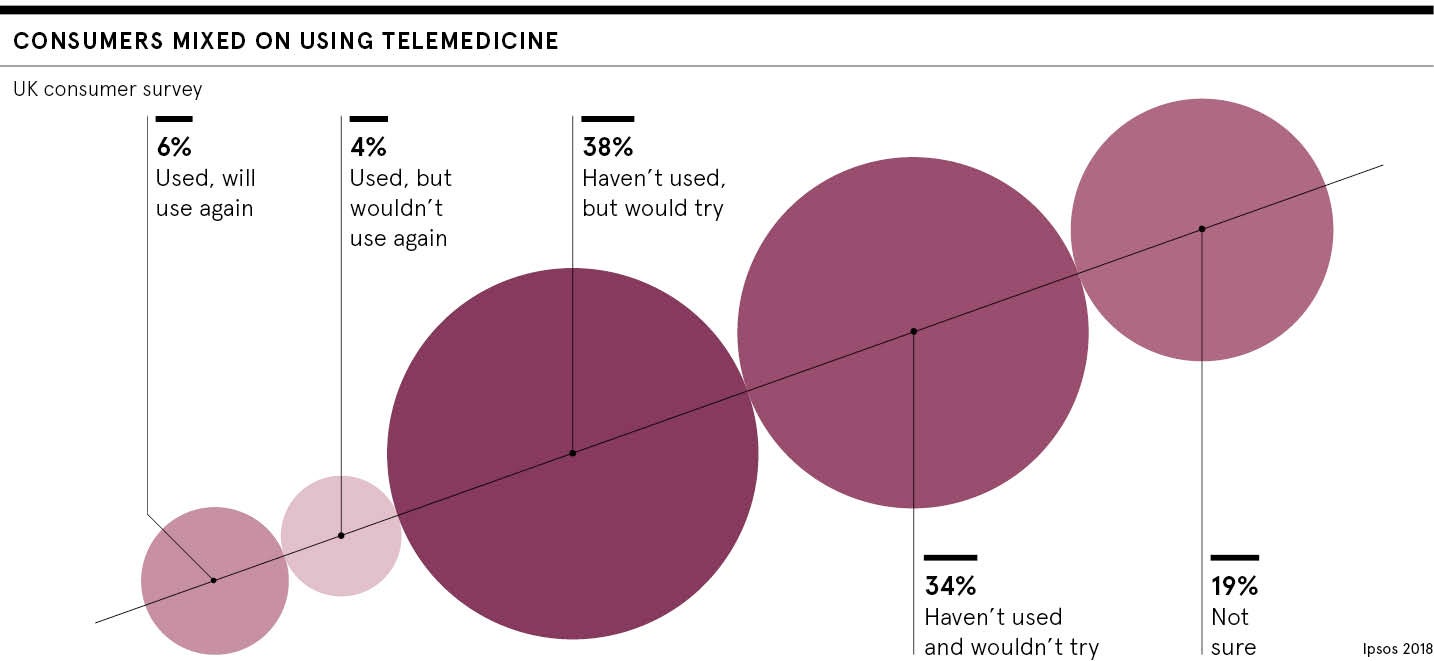NHS doctors, who spend three million hours a year assessing skin conditions, are increasingly turning to dermatology telemedicine (or teledermatology) to navigate a strained diagnostic system.
Skin diseases are among the most common ailments presented to healthcare professionals, yet dermatology is not prioritised in the GP training curriculum and is starved of resources.
Around 24 per cent of the public seek medical advice for skin conditions and a report by the Association of the British Pharmaceutical Industry (ABPI) earlier this year called for urgent action to “make dermatology an exemplar for integration, self-care and harnessing technology and innovation”.
The ABPI Dermatology Initiative report identified telemedicine – the use of secure mobile devices to upload and share images and video links for remote patient monitoring – as a vital tool to support triage and referral if properly integrated with existing services. The take-up is gathering momentum.
A lot of our skin cancer clinics are full of patients with benign lesions because the GP has nowhere else to send them
Skin cancer rates have risen by 70 per cent for people aged 25 to 49 since the 1990s, according to Cancer Research UK and, with one in ten consultant dermatology posts vacant, the stress on secondary care is an advancing concern.
“Technology needs to be embraced on a wider scale and interoperability of systems is key. For this, hearts and minds need to change as well as further investment given to technology,” says Dr Angelika Razzaque, executive chair of the Primary Care Dermatology Society. “Clinicians and managers need to be more open minded and need to have more time for innovative thinking. With busy clinics and government targets to keep up with, there is little room for creative thinking.”
How teledermatology apps speed up treatment
But dedicated apps, improved image quality and secure systems are providing GPs with tools to streamline diagnostic and therapy pathways. Consultant Connect, a company that links GPs to specialists across disciplines, found dermatology eager to embrace its potential.
“Our approach worked very well in cardiology and diabetes, but we kept being asked ‘do you do anything for dermatology?’,” says founder Jonathan Patrick. “We added a function to our app that made it easy for GPs to take photos safely using their own phone. The photos aren’t saved on the phone nor the user’s photo stream. They are saved to the cloud and can be easily exported to the patient record or the NHS electronic referrals system.
“The photos can also be shared directly with NHS dermatology teams. It’s now the most used photo app in the NHS.”
Dr Alice Overbury, who has used Consultant Connect at her practice in south-east London, says the system was “revolutionary” in helping provide fast diagnoses and targeted referrals.
New tech cutting costs and waiting times
Online dermatology service Dermatica allows patients to upload three photos of their skin for remote review for speedy identification and therapy of conditions such as acne, which if left can become a devastating burden. “We offer efficient, effective and affordable access to specialist care for common, mild-to-moderate skin conditions, such as acne and anti-ageing concerns,” says Dermatica’s Dr Natalie Spierings.
Established teledermatology schemes have been credited with reducing waiting times and costs, while also improving convenience for patients and spreading knowledge across healthcare.
“Hospital trusts are now looking at it to streamline the patient pathway and reduce waiting times of four to six months, down to two weeks,” says Dr Adil Sheraz, consultant dermatologist and British Skin Foundation spokesman. “Patients get seen quicker and get a treatment plan in place, particularly for more benign conditions such as rashes, acne or a mole where the GP just wants a second opinion.
“At the moment, a lot of our skin cancer clinics are full of patients with benign lesions because the GP has nowhere else to send them and the patient does not want to wait six months. Teledermatology allows GPs to access expert opinion to refer with full confidence and reduce skin cancer lists.”
Patient data needed for accurate diagnoses
Dr Sheraz adds that safety protocols, patient data and confidentiality are robust, but image quality, combined with good patient history, are key to a successful system.
“We have a growing and ageing population which means more lesions, skin cancers and other age-related skin complaints. There are not enough dermatologists to meet the demands. Teledermatology is now seen in a more positive light and can provide a quicker access point for a dermatological opinion, and is often more convenient for patients in terms of travel and logistics,” he says.
“We’ve had good feedback from both patients and GPs. Of course, it also serves as a great learning tool for primary care physicians who can look back at the images and the final dermatological diagnosis.”
Teledermatology is in its relative infancy and needs initial promise backed up by evidence that it can consistently impact waiting times and improve patient pathways. Integrating systems and reimbursement for telemedicince across the vast NHS landscape will also prove a logistical and financial challenge.
Dr Razzaque concludes: “There is some benefit in accessing telemedicine and teledermatology, but there are limitations and, for clinicians being able to give advice, the quality of photographs needs to be good, as well as the information supporting the photo. Patients still prefer face to face and it remains the gold standard of consultation.”
How teledermatology apps speed up treatment


